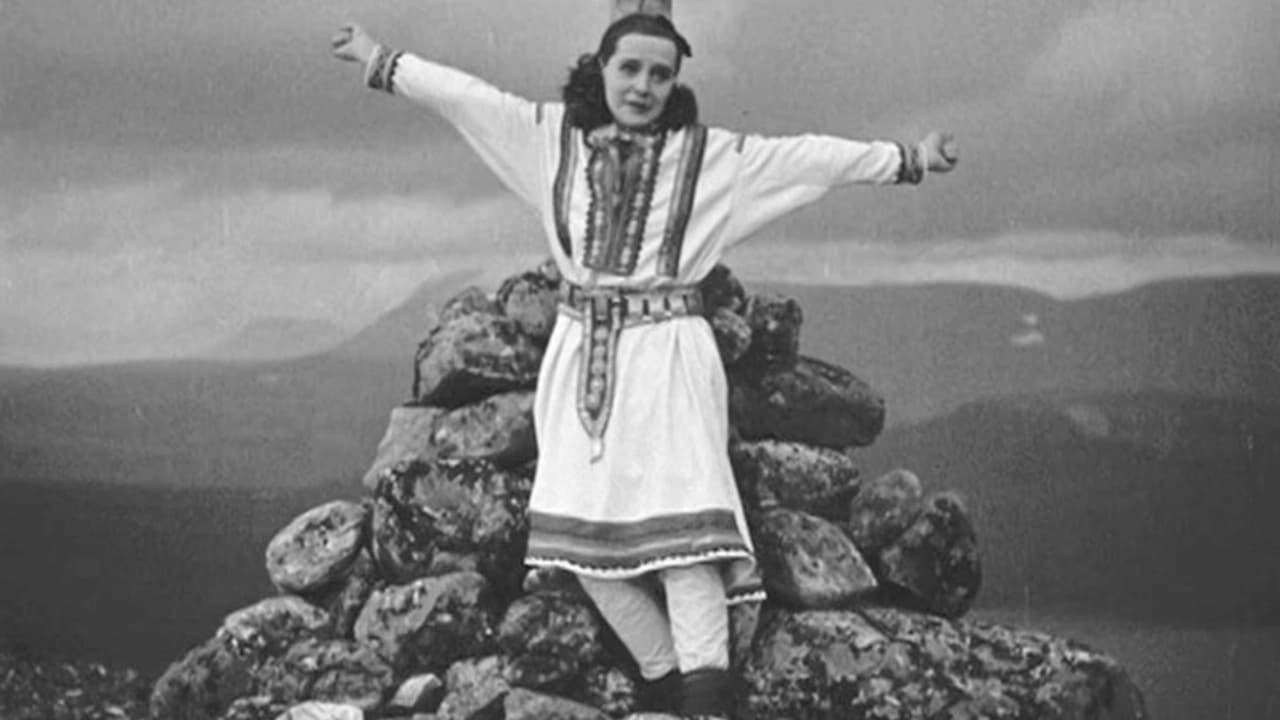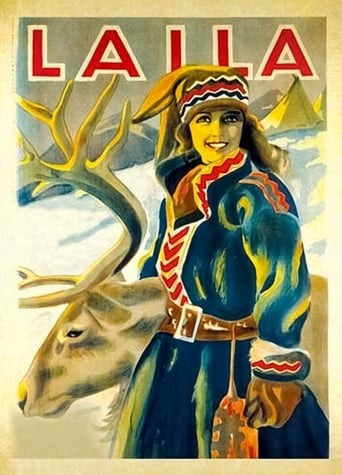

Self-important, over-dramatic, uninspired.
... View MoreSave your money for something good and enjoyable
... View Moren my opinion it was a great movie with some interesting elements, even though having some plot holes and the ending probably was just too messy and crammed together, but still fun to watch and not your casual movie that is similar to all other ones.
... View MoreIf you're interested in the topic at hand, you should just watch it and judge yourself because the reviews have gone very biased by people that didn't even watch it and just hate (or love) the creator. I liked it, it was well written, narrated, and directed and it was about a topic that interests me.
... View MoreYou'll have to forgive Laila for its slow pace, which is a common enough problem for films of this era. Director George Schnéevoigt tends to draw scenes out in what seem like unnecessary ways, including holding the camera on his actors' faces for too many seconds as they emote, and the film should have been shorter than its 2 hour and 45 minute run time. However, if you can cope with that, this film has a lot of visual treats that make it well worth watching, and is fairly unique besides.Filmed in the Finnmark region of the extreme northeast part of Norway, 'Laila' deals with the cultural differences between the Lapps, the nomadic indigenous people who were primarily reindeer herders, and the Norwegians, who were primarily settlers and traders. At the center of the story is Laila (Mona Mårtenson), a young woman who was born Norwegian, but through a couple of tragic accidents, ends up being raised by Lapps. As she grows up, she's promised to her Lapp step-brother (Henry Gleditsch), but finds herself falling for a Norwegian (Harald Schwenzen) who turns out to be her cousin. Mårtenson is athletic and beautiful, and the two men in this love triangle are both rather dashing, which adds to the natural scenic beauty of their surroundings.While the story itself gets a little melodramatic at times, the best part of the film is how it transports us to this remote part of the world. We see packs of wolves bounding through deep snow, and large herds of majestic reindeer. We see reindeer being tamed, and pulling individual sleds and people on skis. The traditional apparel is fantastic – the hats, big furs, and the way babies were thoroughly wrapped up. The visual appearance of the older Lapp men (played by Tryggve Larssen and Peter Malberg) is striking, with their strong eyebrows and features. In one scene, a Lapp mother gives her two boys a hot bath, then turns them out naked to roll around in the snow. In others, Mårtenson gracefully pilots a canoe. With all of that and the beautiful snowy scenery, it's just a delight to watch.
... View MoreMagnificent scenery, including lots of snow, superior acting, and moving camera by director George Schnéevoigt all make the involved story set in the frozen wastes of Scandinavia absolutely enthralling.Accompanied by a score (produced by the prolific Robert Israel) of piano reductions of music from Grieg, "Laila," as presented on Turner Classic Movies on 22 November 2015 -- remember we in California are hours behind most of these United States, the Eastern Time Zone of which saw it on Monday morning, 23 November -- presented a picture of a life so foreign to me, and probably most of us, that it could have been done badly and still be mesmerizing.Frozen wastes, reindeer, strange alphabet, ravenous wolves, life lived on skis, and funny-looking hats just made "Laila" all the more intriguing."Laila" is as good as and often better than any Hollywood production, and I am puzzled as to why we haven't seen more films from Norway.Above all, watch the marvelous bodily and facial expressions to see some superlative acting.Especially watch Mona Mårtenson in the title role: She is beautifully athletic as the Lapp girl, and she and the other three young adults in particular are very attractive besides.And Mona Mårtenson has one of the most expressive faces I have ever seen. She alone would make this movie worth watching again and again.To sum up, this is an extremely well done look at a culture so different, it is downright alien, but utterly fascinating. I very highly recommend "Laila," for frequent viewings.Two words recur you will want to research: "Finnmark" and "daro." When you understand them, watch "Laila" again with improved understanding
... View MoreI caught the second half of this move late at night on TCM. I really enjoyed the beautiful scenery of the Lapp people and their folk costumes. The vistas behind the actors was breathtaking. I also enjoyed watching how integral the reindeer was in their culture. They reindeer pulled the sleds and pulled the people on skies. They showed the dwellings of the Lapp people and a traditional wedding. I live in Southern California, so I have never seen anything like this. Most exciting was knowing that nothing was computer-generated like today. It was a wonderful glimpse into the past. The plot, though a little thin and a bit predicable compared to today's films, was still interesting and moved quickly enough to keep interest.
... View MoreNot laden with the obvious and overstated national romanticism in the pictorial compositions as a few of its Norwegian contemporaries (most notably Rasmus Breistein's "Brudeferden i Hardanger", 1926), this film displays a certain freshness unusual for Norwegian films to date. Part of this fact is probably due to having a Dane direct in the relatively harsh conditions of northern Norway (mostly) during winter. Another factor is the very lively Mona Mårtensson as Laila, although she appears in the second half of the film, which is inferior to the first due to its rather melodramatic turn. Slipping at times into theatrical overacting, Mårtensson still mostly conveys the liberating, semi-naive and cut to the chase-attitude of Laila on the verge of adulthood torn between two cultures and mind sets: If one is to over-determine, the best of her performance is very liberating in the way it shows Laila as an improvising individual in her encounters with the Norwegians at the trading post, putting up the face of nomadic same culture penetrating and breaking the ice of the western European respectively. The editing of the film also serves up some (for is time, ontologically) very good disposing of the story, as we the viewers in some vital situations are held in suspense through a sort of reverse dramatical irony, not being told things in the right chronological order. The nature of this is not filmically complex, but it has a peculiar (unintended?) effect of enhancing the broader existential feel of the plot. As when the baby Laila's crib is first found empty, suggesting to us and the mother that she has been taken by the wolves, BEFORE we are told in a flashback who has really found her, which is of course STILL OBSCURE to the mother.As a final note, this film was recently screened at the Cinematheque in Oslo at its right speed of 16 fps., making it both comfortably realistic and a good 2 hours and 40 minutes long, which is certainly felt towards the end, when melodrama peaks. Note how the character Mellet disappears out of the film, slightly out of focus in the back of the picture, walking out of the frame behind the kissing couple. Very sad, and at the same time sort of reminiscent of the implications of Welles' much acclaimed depth-of-field revolution 12 years later...
... View More